How to Survive Gorilla and Other Primate Attacks
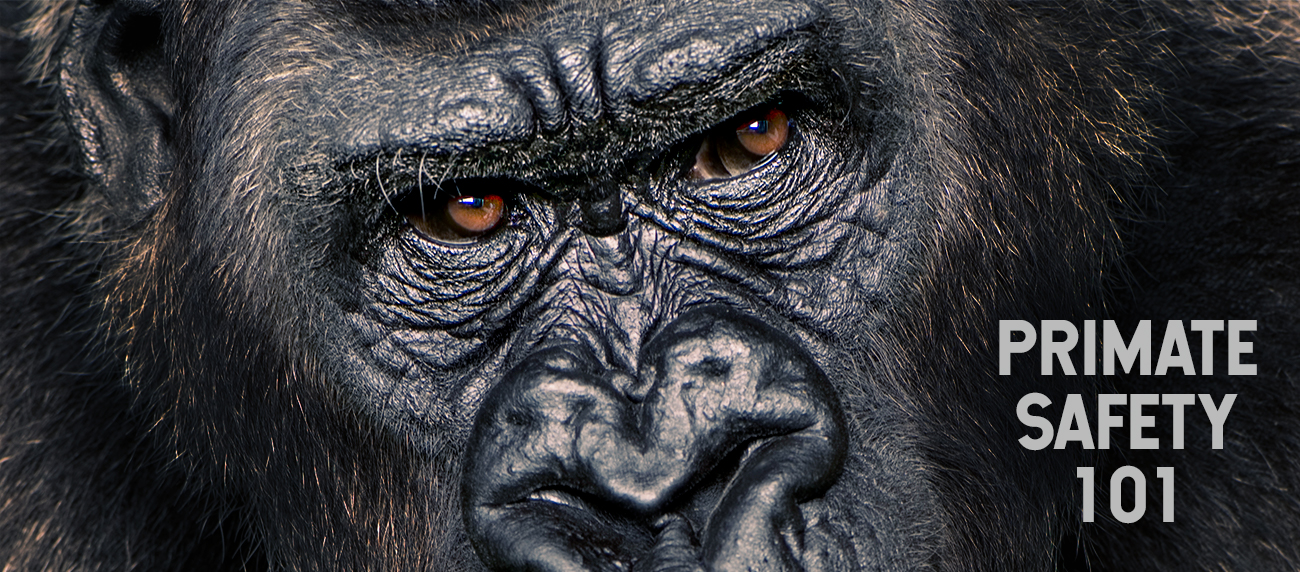

Primates are the monkeys and apes of the world. They range from small marmosets to huge male gorillas. The great apes have been depicted in various Hollywood movies as violent brutes since the beginning of cinema, like King Kong for example. It took amazing work by primatologists such as Dian Fossey, Jane Goodall, and others to change our minds a bit. In fact, the modern day depiction of King Kong portrays him more as a hero than a villain. Let’s not forget though, an interaction with a great ape should not be taken lightly. The largest wild lowland gorillas weigh 300-400 pounds and are easily ten times stronger than a man.
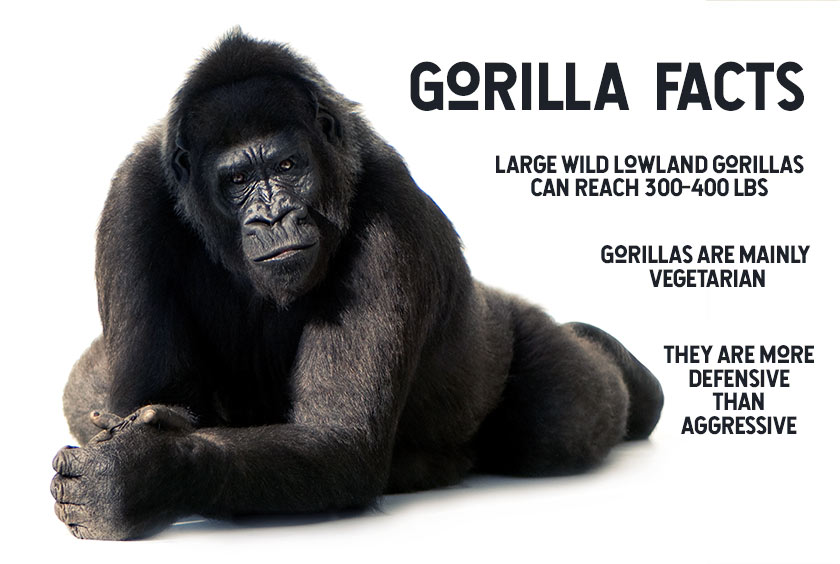
Are these primates innately dangerous to us? That question was on everyone’s mind in 2016 when a boy fell into the gorilla habitat at the Cincinnati zoo. A 440 pound silverback by the name of Harambe grabbed him after he fell in. Video of the incident shows him at times looking protective and at times pulling the kid around almost like a rag-doll. Was this a protective and loving behavior, or was it aggressive? The key to knowing that lays in understanding their wild behaviors.
Unfortunately in this case, zoo keepers made the quick decision that this may have been a type of display behavior – something male gorillas do when they feel threatened. To save the boy, the zoo shot and killed Harambe – much to the horror of many. The zoo defended its actions, and to be fair, that’s a hard call to make in the chaos that was happening during the event. In hindsight, I’ve spoken with some of the world’s experts in gorilla behavior who think the best option, given the situation, would have been to separate the gorilla from the child.
This is maybe one of the most important reasons to discuss the behaviors of these animals here. So here is a quick synopsis of what we know about many of the different primates and how to deal with a few that could be considered dangerous.
Primate Basics
There are around 500 species of primates. That includes monkeys and what we call the great apes – gorillas, chimpanzees, bonobos, orangutans and of course, Homo sapiens. I’ll leave humans out of this treatment though. We all know we’re potentially dangerous.
Of all these, there are only a handful that do more than throw poop at you from the treetops – which has definitely happened to me a few times. Let’s briefly go through each – each primate, not each poop-throwing encounter.
Gorillas
Gorilla troops tend to be generally peaceful. They eat mostly vegetation, and the large males are more defensive than aggressive. They’ll tolerate or (more likely) run away from people approaching so long as you don’t seem aggressive to them. I’ll go more into avoiding conflict with them later in this chapter.
Chimpanzees
Chimps share 98% of our DNA. They’re similar to bonobos, with one main behavioral distinction – they’re known to murder their own kind. In fact, scientists have documented 152 murders where one clan of chimps gangs up and kills a member of a nearby group. These attacks aren’t always restricted to their own kind either. They routinely gang up on other monkeys (mostly red colobus monkeys) to eat them. After trapping these monkeys, they’ll dismember and consume body parts, sometimes as the monkey continues to scream. If that thought disturbes you, searching for it on Youtube will definitely give you nightmares.
Occasionally, chimps are violent towards humans. In the mid 1990’s, for example, a male chimp by the name of Saddam was terrorizing villages in Uganda. One kid was grabbed from a blanket as the mother was picking crops nearby. Another was taken from a woman’s back as she was picking cassava. In total, he attacked 7 children and killed at least two of them.
Orangutans
These great apes are generally very peaceful. They’re strong, so you definitely need to be careful around them. Attacks on humans are rare and there is only one documented attack of an orangutan actually killing another orangutan.
You can usually tell when they are upset since they’ll do what’s called a kiss squeak and start running away or displaying. You know they’re really upset if they “snag crash”, which involves pushing dead or dying trees so they fall in your direction. Usually they try to leave before this happens though.
Rhesus macaques
In India, rhesus monkeys live in giant troops of up to 200 individuals that are constantly causing problems for humans. They’re well adapted to living near us, and they’re good at stealing food. A fair number of problems have arisen when they’re in these situations and habituated to humans.
In 2018, for instance, a baby was snatched from a crib and killed. That same year, a troop of macaques were to blame for a bunch of bricks falling on an elderly man and killing him. Even if they’re not in the news for killing someone, they’re often aggressive towards people and love to steal stuff – “cantankerous little punks” as one researcher I know likes to call them. They are also known to carry herpes B, which isn’t dangerous for them, but has an 80% mortality rate for humans. That means even a small bite has the potential to kill you.
Other Primates that use aggression in lethal attacks.
Lethal attacks targeting other adults within a species are rare. Besides chimps, only orangutans, red colobus monkeys, capuchins, muriquis and spider monkeys have been observed using deadly force on one another.
With that said though, here are a few more monkeys that are large and should command respect:
- Baboons – all five species
- Mandrills and drills
- Geladas
- Spider monkeys
- Macaques
- Langurs
If you’ve never heard of these, that’s ok. I list them here so you have something fun to look up on YouTube in the future – these primates are incredible!
Deadly diseases:
Let’s not forget that we’re genetically very similar to primates. This close relationship means a virus that infects another primate could more easily infect us than a distantly related species. They can harbor some dangerous diseases too. Macaques can carry a deadly form of herpes known as Herpes B. They also harbor rabies and Zika. Many species, including baboons and orangutans, are known to have hepatitis so you don’t want to get bit by one. Hunting and eating chimps and sooty mangabeys in west Africa likely gave rise to HIV. We could also get things like tuberculosis, Ebola, monkeypox, and yellow fever. Plus, there is always the fear that we could pick up other yet unstudied diseases.
Scenarios to Avoid with Gorillas
Don’t stare at a gorilla, beat your chest, or attack them. Flashing teeth and chest beating are signs of dominance in gorilla hierarchies. You don’t want to challenge a gorilla. You won’t win.
Don’t leave a baby or young child unattended near chimps or macaques. They very easily could steal them or, in the case of chimps, dismember and eat them.
What is the Most Dangerous Primate
Chimps are four times as strong as humans and arguably more aggressive and violent too. A recent study estimated that chimps have twice the intraspecies (within their species) murder rate compared to humans. The actual numbers are variable depending on groups, but it’s quite compelling regardless. Combined with strong teeth and occasional rogue males, careful safety measures are recommended when humans and chimps live in close proximity.
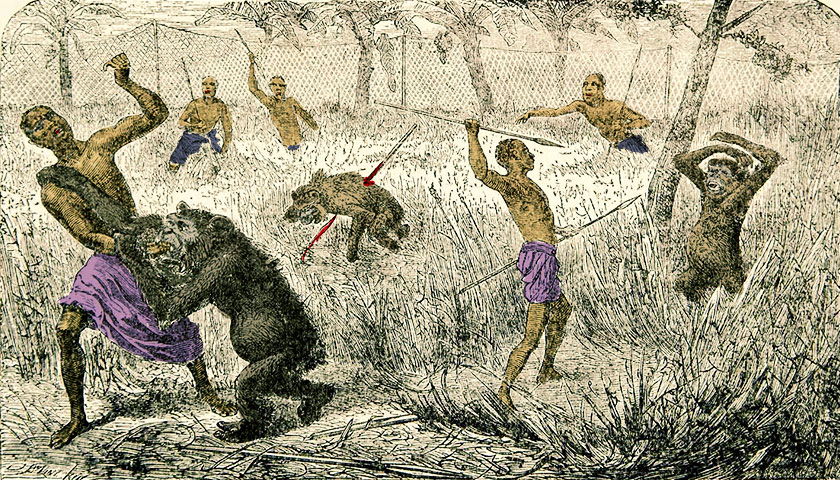
How to Survive if a Gorilla Approaches?
I outline here how to deal with a gorilla because groups of tourists occasionally go to see them. Aggressive encounters can generally be avoided if you follow a few recommended steps. If a gorilla approaches:
- Show submission.
- Don’t look them in the eye.
- Don’t back away – Instead stand your ground.
- Don’t run – Being still is your best bet.
- Be Calm and pretend you’re doing your own thing. Maybe you’re just eating grass or looking at bugs. Whatever it is, this makes you look less intimidating.
- Keep your fingers hidden. Generally if an ape or any monkey approaches or grabs you, it’s best to keep your fingers protected because they love to bite fingers when they’re fighting each other. I’m sure this is the first thing you’ll be thinking about if a big ape grabs you.
My Personal Account with Primates and Why I Wrote This:
In 2012, Haley and I made a documentary about scientists who were doing a groundbreaking primate study in Kenya. They were trying to ascertain how the baboon troop made decisions to go from one place to another. To do this, they needed to put the world’s most advanced tracking collars on an entire troop – something that had yet to be done. I sometimes like to tell people that we lived with a troop of baboons for two weeks in Africa, but that’s not exactly accurate. We did, however, spend most of our waking hours with them. They were habituated to our presence during feeding times, so they tolerated us quietly filming and observing them go about their day. We were working with accomplished researchers, veterinarians and Kenyan wildlife officials, so we had strict safety procedures in place. We followed them to the letter because hanging out with baboons has some serious potential danger.
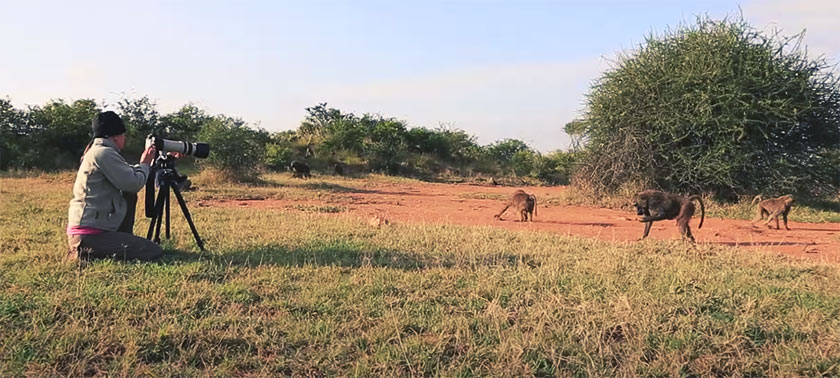
At any one time there were about 40 olive baboons around us feeding on the ground. There were large 80+ pound dominant males with massive canines that far outmatched any of us in both speed and strength. Then there were mothers, babies, and a handful of young adults mixed in. The scariest ones, in my perspective, were the huge males who would forcefully come running into the action if other individuals began making an alarm call.
Our instructions from the local guides and scientists were pretty simple :
- Arrive before dawn to set out food in the study traps and surrounding areas before the baboons woke up. This was to make sure they could not see us and associate us with a food source or with the study traps.
- Stay calm, quiet and move slowly if at all.
- Don’t look them in the eye. Essentially this shows you’re not a threat that they should deal with.
This worked well to get them habituated to our presence so we could put temporary tracking collars on them. Once that began, safety protocol sometimes reverted back to “stay in the truck and let the vets handle it.” This was my first introduction to safety protocols around primates.
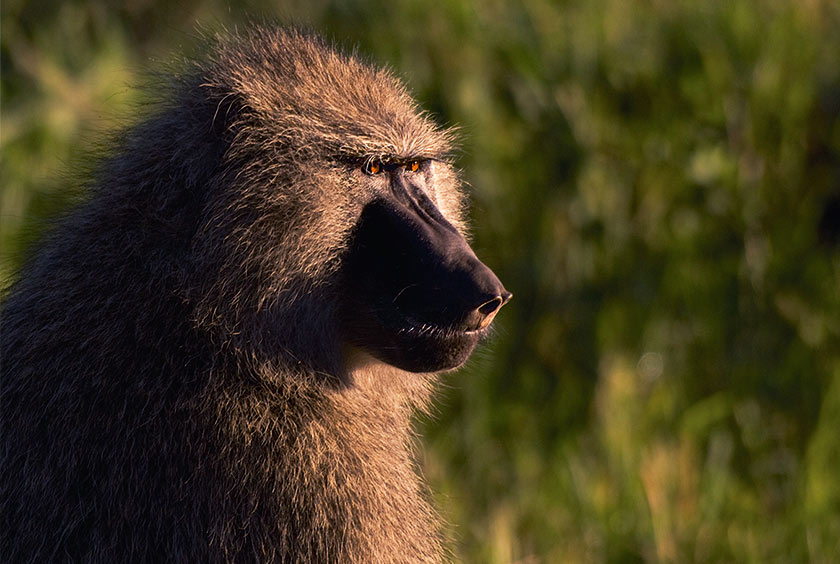
Fun fact: The pygmy mouse lemur of forests in eastern Madagascar is only two and a half inches long and is the smallest primate. It’s definitely one you don’t have to worry about.
Prefer Listening?
If you’d rather listen to this article, I’ve recorded it here to make it as accessible as possible.

